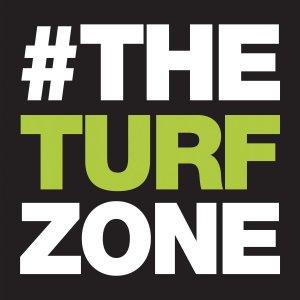The Turf Zone Podcast

Virginia Turfgrass Council – Potential Asian Jumping Worm Impact on Turfgrass Management
VIRGINIA TURFGRASS JOURNAL: Jordan Thompson, Thomas Kuhar, Ph.D. and Alejandro Del Pozo, Ph.D. – Department of Entomology, Virginia Tech
In the world of turf grass management, earthworms have often been considered our underground allies, contributing to nutrient cycling and soil aeration. Unfortunately, a new earthworm has arrived with the potential to turn our current beliefs upside down. The Asian jumping worm (Amynthas spp.) presents a new challenge within the realm of turfgrass management as it disrupts delicate soil ecosystems, depletes nutrients and organic matter, and populates uncontrollably. As stewards of thriving turf landscapes, understanding the nuances of this invasion is important, especially as we strive to strike a balance between ecosystem health and the demands of various turfgrass settings, including golf greens (Figure 1).
The Asian Jumping Worm Invasion
Originating in East Asia, this invader is recognized for its distinctive “jumping” behavior, a clever adaptation for predator evasion. Its ability to reshape soil ecosystems quickly sets it apart, but not in a positive way. Unlike its earthworm counterparts, the Asian jumping worm has the ability to transform soil into an environment that provides minimal benefits for turfgrass and other terrestrial life. The depletion of organic matter leads to compromised plant health, permanently altering the landscape and inadvertently opening the door to further invasive species.
Origins and Challenges
The Asian jumping worm’s journey to new regions is closely tied to pathways like horticultural trade, plant transport, and soil contamination. A key factor behind its rapid proliferation is its ability to reproduce via parthenogenesis, allowing a single worm to generate multiple generations in a single year. This adaptability and ability to thrive across diverse soil types, from organic-rich to sandy or clayey, contribute to its invasive success. Unlike its earthworm relatives that often remain within specific soil layers, Asian Jumping Worms reside closer to the surface, enabling them to swiftly colonize new areas.
Asian Jumping Worm Impact
Within the realm of turfgrass management, the Asian jumping worm’s voracious appetite for organic matter is a cause for concern. Rapid leaf litter and mulch consumption disrupts soil structure, elevating the risk of runoff and impeding plant growth. In large turf areas such as golf courses, where worm castings already present an issue with aesthetics and maintenance, worms that altogether destroy the soil could spell disaster for quality fairways and greens. There is some research suggesting these worms alter soil chemistry including the pH and carbon/nitrogen ratios. A shift in soil pH can disrupt the delicate balance required for optimal turf growth, leading to diminished nutrient availability and potential nutrient imbalances (Figure 2).
Current Research and Potential Solutions
At Virginia Tech’s Department of Entomology, we are working on understanding the implications of the Asian jumping worm invasion on turfgrass environments. Through bioassays and field tests, we aim to develop a better understanding of the worm’s specific ecology as well as its effects on other soil dwelling organisms and plant life. Any solutions to managing or eliminating the worm may encompass the investigation of biological controls, the evaluation of tailored cultural practices, and chemical interventions.
About the Author
Jordan Thompson
Jordant95@vt.edu
BS in Environmental Horticulture VT ‘23
MSLFS in Entomology VT ‘25
Jordan is a graduate student at Virginia Tech studying the Asian jumping worm in Virginia and hoping to find possible control methods.
The post Virginia Turfgrass Council – Potential Asian Jumping Worm Impact on Turfgrass Management appeared first on The Turf Zone.






 Visit Podcast Website
Visit Podcast Website RSS Podcast Feed
RSS Podcast Feed Subscribe
Subscribe
 Add to MyCast
Add to MyCast